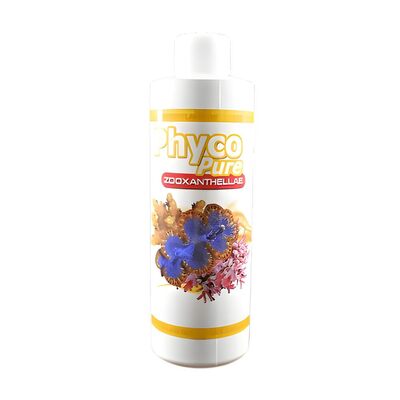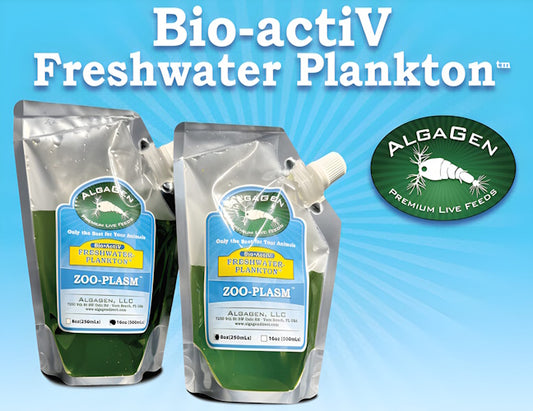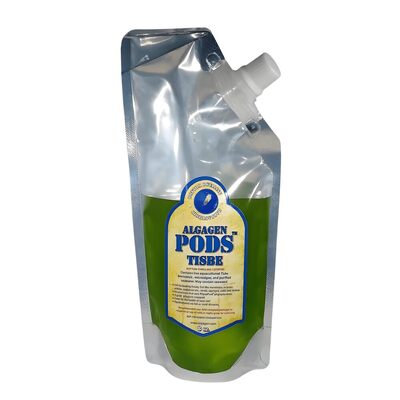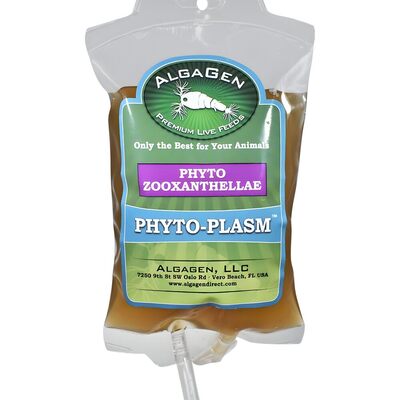As summer temperatures rise, many aquarium and pond owners face the annual challenge of nuisance algae blooms. These outbreaks can cloud water, compete with corals and plants, and disrupt your aquatic ecosystem’s balance. Fortunately, there’s an eco-friendly, science-backed solution: dosing with live phytoplankton.
Live phytoplankton, the microscopic “good algae” at the base of the aquatic food web, offers a natural way to control unwanted algae while supporting the health of your entire tank or pond. If you’re new to phytoplankton and want to learn more about its benefits and where to buy it, check out our guide: Where to Buy Phytoplankton.
Why Summer Brings Algae Problems
Algae blooms are triggered by a combination of excess nutrients-mainly nitrate (NO3) and phosphate (PO4)-and warm water temperatures. These conditions are most pronounced in summer, when increased feeding, longer daylight hours, and higher biological activity all contribute to nutrient buildup.
- Runoff and decomposing organic matter add nutrients to ponds and tanks
- High temperatures accelerate algae growth
- Stagnant water and poor circulation worsen the problem
Unchecked, these nutrients fuel the rapid expansion of nuisance algae such as hair algae, cyanobacteria, or filamentous blooms, turning your clear water green and threatening the health of fish and corals.
How Live Phytoplankton Controls Algae
Adding live phytoplankton is a proactive, natural method to outcompete nuisance algae for nutrients. Here’s how it works:
- Nutrient Competition: Live phytoplankton rapidly absorbs nitrate, phosphate, and ammonia, depriving nuisance algae of the fuel they need to grow.
- Supporting the Food Web: Phytoplankton feeds zooplankton like copepods and rotifers, which in turn feed fish and corals. This strengthens your tank’s natural ecosystem and reduces the need for chemical interventions.
- Oxygenation and Water Quality: Through photosynthesis, phytoplankton increases dissolved oxygen and helps stabilize pH, improving the environment for all aquatic life.
- Limiting Light for Algae: A healthy phytoplankton population can slightly increase water turbidity, limiting the sunlight available for nuisance algae without harming your main inhabitants.
- Live phytoplankton naturally reduces nitrate and phosphate, starving nuisance algae.
- Supports zooplankton and filter feeders, creating a balanced food chain.
- Improves oxygen levels and stabilizes pH, especially important in summer.
- Reduces reliance on chemical algaecides for a healthier, eco-friendly system.
How to Use Live Phytoplankton for Algae Control
- Start Early: Begin dosing in late spring or early summer as temperatures rise and before algae blooms become established.
- Dose Regularly: For best results, add live phytoplankton daily or several times a week, following the product’s instructions.
- Monitor Water Quality: Test nitrate and phosphate regularly to track improvements and adjust dosing as needed.
- Turn Off Skimmers Temporarily: When dosing, turn off protein skimmers for 30–60 minutes to prevent removing phytoplankton from the water column.
- Maintain Good Circulation: Ensure water movement to distribute phytoplankton evenly and prevent dead spots where nuisance algae can thrive.
Phytoplankton vs. Chemical Algae Control
| Method | Effectiveness | Impact on Ecosystem | Status |
|---|---|---|---|
| Live Phytoplankton | High (when dosed consistently) | Supports biodiversity, eco-friendly | Recommended |
| Chemical Algaecides | Quick, but can be temporary | May harm beneficial organisms | Use with caution |
| Manual Removal | Helps, but labor-intensive | No ecosystem benefit | Supplemental |
Benefits Beyond Algae Control
- Healthier Fish and Corals: Phytoplankton is a direct food source for filter feeders and supports zooplankton, which feed fish and corals.
- Improved Water Clarity: By balancing nutrient levels, phytoplankton helps keep water clear and stable.
- Reduced Chemical Use: A thriving phytoplankton community can reduce or eliminate the need for algaecides.
- Natural Water Treatment: Phytoplankton acts as a living filter, processing excess nutrients and supporting the entire aquatic food web.
Want to discover more about the top live feeds for a thriving reef tank? Explore our article on Top 5 Live Feeds for Thriving Reef Tank Ecosystems for more ideas on supporting a balanced aquarium.
“Adding live phytoplankton is like giving your aquarium a natural immune system-outcompeting nuisance algae and supporting every level of the food chain.”
Tips for Success
- Start dosing before algae blooms appear for best results
- Pair phytoplankton dosing with regular maintenance and good filtration
- Monitor livestock for improved vitality and coloration
- Choose a high-quality, live phytoplankton blend for maximum effectiveness
If you’re interested in the science and technique of dosing, see Mastering Phytoplankton Dosing for Saltwater Tanks for expert tips.
Conclusion
Summer algae blooms don’t have to be a headache. By incorporating live phytoplankton into your aquarium or pond care routine, you can naturally outcompete nuisance algae, improve water quality, and support a thriving, balanced ecosystem-all without harsh chemicals. Make live phytoplankton your go-to tool for sustainable summer algae control and enjoy a clearer, healthier aquatic environment all season long.







Recent post